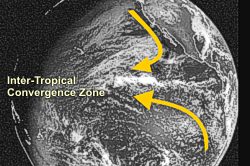An EARTHQUAKE is the result of a sudden release of energy in the earth's crust that creates seismic waves.
3 Types of Earthquake:
1. TECTONIC- this occur when rocks in the earth's crust break due to geological forces created by movement of tectonic plates.
2. VOLCANIC- this occur in conjunction with volcanic activity.
3. LANDSLIP- displacement of large masses of land.
Causes of an Earthquake:
- movement of tectonic plates
- volcanic activities
- landslide
- human activities (usage of explosives)
Effects of an Earthquake:
- destruction of properties
- tsunamis
- loss of lives
The FOCUS is where exactly in the crust the earthquake is happening. While the EPICENTER is the point on the surface right above the focus of an earthquake.
MAGNITUDE measures the energy released at the surface of the earthquake. It is determined from measurements on seismographs. INTENSITY, on the other hand, measures the strength of shaking produced by the earthquake. It is determined from effects on people, properties, and natural environment.
FORESHOCKS are earthquakes which precede larger earthquakes in the same location. AFTERSHOCKS are smaller earthquakes in the same area following the main shock.
ROSSI-FOREL SCALE was one of the first seismic scales to reflect earthquake intensities.
RICHTER SCALE was developed to assign a single number to quantify the energy released duing an earthquake.
Precautionary Measures Before, During and After an Earthquake:
Before:
-Have a "Getaway Kit" ready.
-Learn first aid; know how to stop electric main and gas supply.
-Don't keep heavy objects in high shelves, fasten heavy appliances to the floor, and anchoor heavy furniture to the walls.
-Plan for your family for reuniting.
During:
-If you're indoors, stand against a wall near the center of the building, or find a sturdy table and do the "Drop, Cover and Hold"
-If you're outdoors, stay in an open place
-Don't use open flames
-If you're in a moving vehicle, stop away from bridges and stay until the earthquake stops.
After:
-Check yourself and nearby people for injuries. Provide first aid.
-Turn on your TV or radio for emergency instructions.
-Stay out of damaged buildings, bridges and coastal areas.




